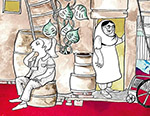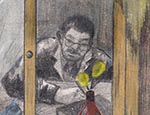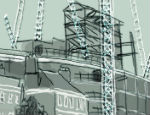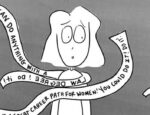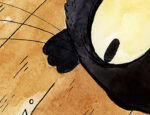There’s an interesting comment in illustrator Daniel Innes’ biographical note on the back cover of Denison Avenue: ‘Watching the neighbourhood change over the years has ended his love affair with Toronto.’ It references the city Innes was born and raised in, but that sense of loss also defines his co-creator Christina Wong’s story, which forms the bulk of this novella that melds art with literature.
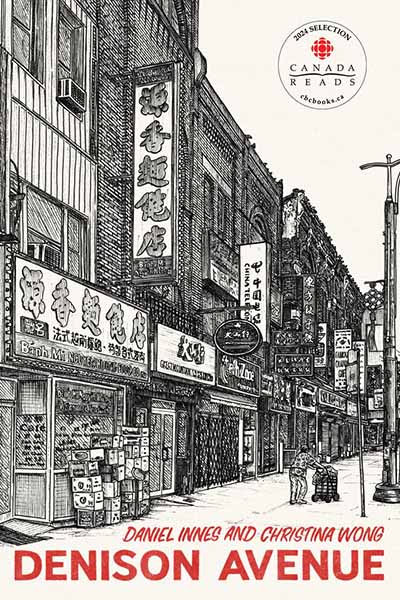
Set in Toronto’s Chinatown, this is a book that could be about any of the world’s big cities because it documents how change, and time, impact their most vulnerable residents. Its protagonist is an ageing Chinese woman called Wong Cho Sum, coming to terms with life after the sudden loss of her spouse. It documents how the gentrification of her neighbourhood appears to make life seem bigger and brighter for everyone except those who call it home. In the process, it becomes a critique not just of the debilitating forces of capitalism, but of how we look at age in a society hopelessly devoted to the young.
The book flips open from both sides, giving Wong and Innes their own space. While it’s easy to see how the illustrations could complement the writing, this approach clearly allows both artists to breathe more easily. It also prompts the reader to choose their own point of entry into a common world populated by places—the Lillian H Smith library, museum, Kensington Market—most long-time residents of Toronto will easily identify. The shift from word to image is a bit abrupt, but that is a quibble.
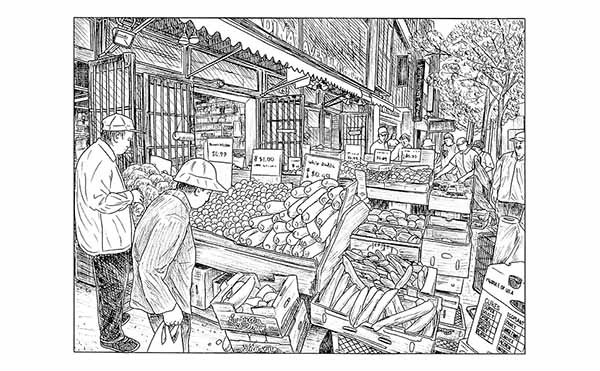
Speaking of the art in Denison Avenue, the detailed inkwork feels like a return to basics for Innes whose portfolio includes painting and installation, as well as graphic and textile design, illustration, sign painting, and even tattooing. His powers of observation are commendable, allowing him to step back and capture sweeping views of the streets while managing to retain the individuality of people living in the neighbourhood. The men and women he etches are unique, some bending over to refill vegetable trays at local stores, others making their way home with groceries in small plastic bags as they cross busy intersections. There are faithful reproductions of buildings, famous local brands, and historical storefronts spread across Toronto’s Chinatown, as well as a map of the area he has chosen to draw attention to. In an interview, Innes spoke of wanting the map so readers could follow the route page by page and physically see the spaces depicted. His sketches slowly become grittier, the homes shabbier, in advanced stages of disrepair. Taken as a series of picture-postcard moments, it evokes a sense of poignancy and longing that finds voice in Wong’s more explicit description of a city gradually losing its identity.
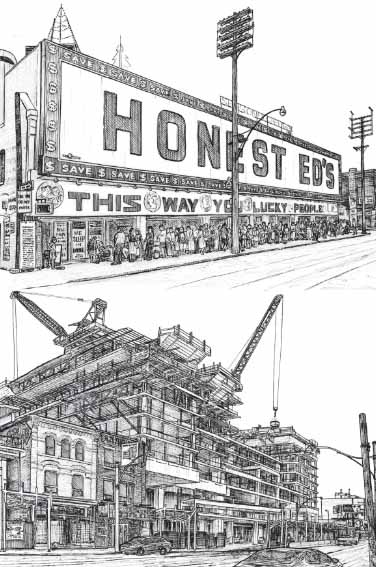
While gentrification aims at increasing a neighbourhood’s economic value, there has long been an element of controversy surrounding it too, as changing demographics and the displacement of residents creates unavoidable resentment, a loss of social diversity, and even a decrease in political participation. Wong and Innes, in their own ways and their chosen medium, focus on these aspects of something as inescapable in our times as it is heartbreaking.
Interestingly, their Instagram account allows us to see what a more integrated approach would look like, as Innes’ illustrations are held up alongside photographs, memorabilia, and pithy notes about the locality.
Denison Avenue is a great example of how something that is neither a graphic novel, nor a novella, can exist simply because the intent is all that matters.
Christina Wong (W), Daniel Innes (A) • ECW Press, $32.95
Review by Lindsay Pereira





